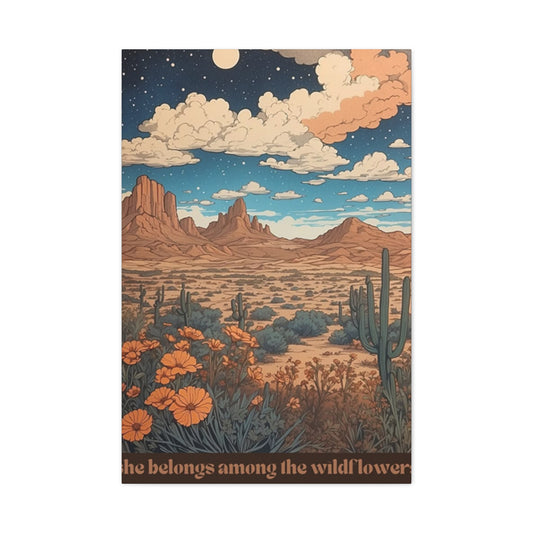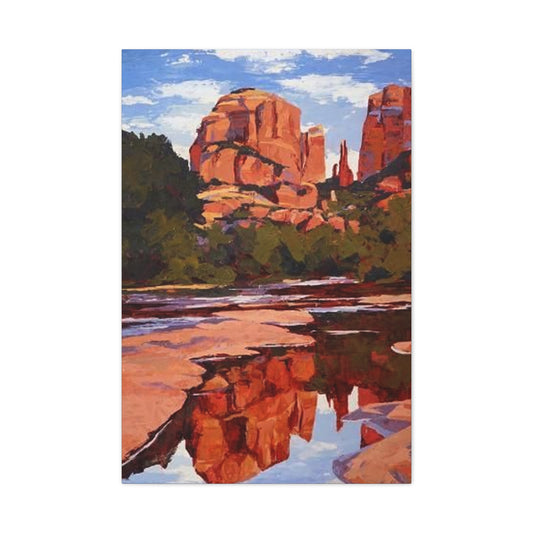Aspiring photographers frequently encounter difficulties when attempting to create compelling visual arrangements in their images. These comprehensive strategies will establish a solid foundation for your photographic journey, enabling you to develop sophisticated techniques from the very beginning.
Visual arrangement serves as the cornerstone of impactful imagery. When your objective involves capturing powerful photographs, this element represents one of photography's most crucial aspects. Unfortunately, numerous photographers initially encounter only superficial guidelines like the conventional "rule of thirds," never delving deeper into the intricacies of crafting superior visual compositions. The encouraging reality reveals that extensive knowledge awaits discovery regarding compositional techniques, making this educational pursuit exceptionally worthwhile. Visual arrangement encompasses a profound subject matter, and while comprehensive coverage within a single discussion proves impossible, this guide addresses the most significant principles and methodologies.
Understanding Visual Structure in Images
Visual structure represents the fundamental framework of any photograph. It encompasses the deliberate arrangement of elements within your image to achieve your desired aesthetic outcome, possessing the capability to either elevate or diminish your photographic results. When you encounter captivating subject matter, regardless of exceptional lighting conditions or extraordinary circumstances, successful outcomes still require skillful compositional execution.
Photographers possess tremendous authority to modify their image's visual structure. Movement in various directions, forward and backward positioning, lateral adjustments, lens modifications including zooming capabilities, and careful consideration of included and excluded scene elements all contribute to this creative control. When executed properly, visual arrangement transforms your subject matter and presents it to viewers with maximum effectiveness. This mechanism serves as the primary vehicle for conveying messages through your photographic work.
|
Related Catagories: |
The ability to manipulate spatial relationships, perspective, and visual hierarchy provides photographers with unparalleled creative freedom. Understanding how different positioning choices affect the final image empowers you to make intentional decisions rather than leaving compositions to chance. This conscious approach to image creation separates amateur snapshots from thoughtfully crafted photographs that resonate with viewers on emotional and aesthetic levels.
Fundamental Components of Visual Organization in Photography
In photography, understanding the fundamental components of visual organization is essential for creating powerful and engaging images. These basic building blocks—points, lines, and geometric forms—serve as the foundation upon which all other compositional techniques are built. By understanding how these components function individually and in harmony, photographers can transform a chaotic scene into an organized and aesthetically pleasing image. This foundational knowledge is not only essential for beginners but also for advanced photographers who wish to elevate their work to new levels of sophistication and expression.
Points: The Smallest Building Blocks of Composition
In photographic terms, a point refers to a small, distinct mark or location within the frame. Though seemingly insignificant in isolation, points serve as the most basic unit of composition. A single point can act as the focal point of an image, drawing the viewer's attention and providing a visual anchor. The placement of this point within the frame can drastically influence the overall composition and how the viewer interacts with the image.
For example, in portrait photography, the subject’s eyes can often serve as a point of focus, guiding the viewer’s attention directly to the subject. Points can also be created by small details, such as a glimmer of light or a unique object in a landscape, which can serve as an anchor to pull the viewer’s gaze toward a particular area of the frame.
Points become more powerful when they are placed purposefully within the composition. They can establish a sense of balance, contrast, or tension within an image. The strategic placement of points can direct the viewer’s eyes to move across the frame in a deliberate sequence, creating a narrative flow or guiding the viewer toward a specific focal point.
Lines: The Pathways of Visual Movement
Lines are among the most powerful elements of visual organization. In a photograph, lines guide the viewer’s eye and establish visual movement. They can be used to lead the viewer’s gaze through the composition, drawing attention to the subject or creating a sense of depth and perspective. Lines can be horizontal, vertical, diagonal, curved, or even implied through the positioning of objects within the frame. Each type of line conveys a different mood or feeling.
Horizontal lines often evoke a sense of stability, calmness, and restfulness. In landscape photography, the horizon line is often horizontal, providing balance and helping to organize the space. Vertical lines, on the other hand, convey strength, power, and permanence. These lines can be found in structures such as trees, buildings, and standing figures, and they often create a sense of upward movement.
Diagonal lines are dynamic and can convey movement, energy, and tension. They are frequently used to guide the viewer's eyes through the frame or to lead toward a specific point of interest. In action shots, diagonal lines can heighten the sense of motion and drama, drawing the viewer into the scene. Curved lines, on the other hand, suggest softness, fluidity, and elegance, offering a sense of natural movement, often seen in the form of winding roads or flowing rivers.
The power of lines comes from their ability to organize the image and direct the viewer's attention in a purposeful manner. The right use of lines can add depth, dimension, and a sense of structure, transforming an otherwise static photograph into a dynamic and engaging composition.
Geometric Forms: Structure and Organization
Geometric forms such as circles, squares, triangles, and rectangles are essential for creating visual harmony and balance within a composition. These shapes provide structure and organization, making a complex scene more digestible to the viewer. Geometric forms can be present in both the foreground and background elements of a photograph and often serve as a tool for creating symmetry or contrast.
For instance, a photograph that includes a series of circular shapes, such as the petals of a flower or the arches of a building, can create a sense of unity and flow. Conversely, the inclusion of sharp, angular shapes such as triangles or rectangles can add a sense of tension, contrast, or drama to the image. By incorporating geometric shapes into the composition, photographers can guide the viewer’s eye and enhance the overall visual appeal.
In architectural photography, geometric forms are particularly important as they define the structure and layout of buildings, creating a sense of harmony or dynamic tension between elements. In nature photography, geometric forms can emerge naturally, such as the round shape of a rock or the sharp angles of a mountain range.
The interplay between these geometric shapes can add depth, rhythm, and visual interest, making the photograph feel more cohesive and thoughtfully organized.
The Interconnection of Points, Lines, and Geometric Shapes
While points, lines, and geometric shapes each contribute individually to visual organization, their true power is realized when they are combined and arranged thoughtfully within the frame. The relationships between these elements create a dynamic composition that is greater than the sum of its parts. When used in harmony, they form visual connections that guide the viewer’s eye and enhance the overall balance of the image.
For example, a strong vertical line can frame a subject positioned at a point, while a diagonal line can lead the viewer’s eye from the foreground to the background, creating a sense of depth and movement. Geometric shapes can be used to organize elements within the image, drawing attention to key areas and providing structure. When elements interact in this way, they generate a visual rhythm that makes the image more engaging and easier to comprehend.
Additionally, the use of these basic components allows photographers to create a sense of balance and tension. By placing lines, points, and shapes in different parts of the frame, the photographer can guide the viewer’s eye through the image, creating a flow that makes the composition feel intentional and cohesive.
The Role of Contrast and Balance in Visual Organization
Beyond the basic components of points, lines, and shapes, photographers must also consider the role of contrast and balance in visual organization. Contrast refers to the differences between elements in an image—whether in terms of color, tone, texture, or size. The use of contrast helps to highlight specific elements of the composition, making them stand out against the background or other elements in the frame.
Incorporating contrast can make a photograph more visually striking and can be used to emphasize the main subject, directing the viewer’s attention toward it. For example, a bright, contrasting color can draw attention to a particular point in the image, while the surrounding areas may be kept more subdued or neutral.
Balance is another crucial aspect of visual organization. In photography, balance refers to the distribution of visual weight within the frame. A well-balanced photograph feels stable and harmonious, while an unbalanced image may feel off-kilter or uncomfortable. There are several types of balance that can be achieved through composition, including symmetrical balance, where elements are mirrored on either side of the frame, and asymmetrical balance, where different elements are arranged in a way that still feels balanced despite their differing sizes or positions.
Both contrast and balance work in tandem with points, lines, and shapes to create a composition that is visually satisfying and engaging. Understanding how to use these elements together allows photographers to craft images that are both aesthetically pleasing and compelling.
Visual Rhythm and Movement in Photography
The concept of rhythm in photography refers to the repetition or pattern of elements within an image. Just as rhythm in music creates a sense of flow, rhythm in photography contributes to the visual flow of the image. The repetition of points, lines, or shapes creates a rhythm that guides the viewer’s eye across the frame in a fluid, natural manner.
For example, a series of repetitive lines, such as those found in a row of columns or a winding path, can create a sense of movement that leads the viewer’s gaze from one part of the photograph to another. Similarly, the repetition of geometric shapes, such as circles or squares, can form a visual pattern that reinforces the rhythm of the composition.
Movement, on the other hand, refers to the way in which elements within the frame direct the viewer’s attention. Lines, whether straight or curved, can create a sense of movement, while the placement of points and shapes can either enhance or disrupt that movement. Understanding how to manipulate these elements to create rhythm and movement helps photographers control how their images are perceived and how the viewer’s eye travels through the scene.
Simplifying Complex Scenes Through Geometric Relationships
When faced with a complex scene, photographers can deconstruct it by identifying the basic geometric relationships between the elements. This process of simplification makes it easier to compose an image that feels organized and purposeful. For example, a busy street scene filled with various elements can be broken down into points (individual people or objects), lines (roads, buildings, or signage), and shapes (structures or vehicles). Once the photographer understands how these components relate to one another, they can make deliberate compositional choices that enhance the image’s clarity and impact.
In landscape photography, for example, photographers might use the lines of a winding river or road to guide the viewer's eye into the scene, while the shapes of mountains or trees provide structure and organization. By understanding the underlying geometric relationships, photographers can make decisions that improve the overall composition, turning a chaotic scene into a visually coherent and compelling photograph.
The Significance of Deliberate Creative Intent
The paramount secret of effective visual arrangement lies not in adhering to rigid structural templates or formulas for most photographs, as suggested by simplistic guidelines. Instead, the crucial factor involves making compositional choices with deliberate intention and purpose.
Intentional decision-making represents the most critical aspect of visual arrangement. Nothing within your photograph should occur accidentally or without purpose. Every element must justify its existence within the frame. When you consistently apply this principle and invest adequate time in the field implementing it, your photographic quality will experience dramatic improvement. This enhancement becomes almost inevitable because you'll invest more conscious consideration into your image's appearance.
Developing this intentional approach requires patience and practice. It means slowing down the photographic process to carefully evaluate each element's contribution to your overall vision. This methodology transforms photography from a reactive activity into a proactive creative process where every decision serves a specific purpose.
The cultivation of intentional composition also involves pre-visualization, where photographers imagine the final image before capturing it. This mental exercise helps identify potential issues and opportunities, leading to more refined technical execution and artistic expression.
Embracing Visual Simplicity and Clarity
Every photograph you create carries an emotional message, representing the fundamental reason you chose to capture that particular moment. During your photographic endeavors, one of the most beneficial practices involves consciously considering this emotional message and refining your approach to expressing it effectively. This principle highlights the transformative power of visual simplicity.
Simplicity ensures that no element within your photograph detracts from your intended emotional communication. When attempting to convey landscape beauty, eliminate everything from your composition that fails to contribute to that aesthetic goal. This might include power lines, foreground footprints, litter within the frame, or any other distracting elements.
Simultaneously, simplicity applies to your overall compositional approach. Avoid overwhelming viewers with excessive information unless your specific objective involves capturing chaotic or overwhelming scenarios. When your photograph successfully communicates your intended story without distractions, it achieves maximum impact and resonance with audiences.
The pursuit of simplicity often requires difficult decisions about what to exclude from your compositions. This editing process, both in-camera and during post-processing, develops your ability to identify essential elements while recognizing and eliminating superfluous components that weaken your message.
Simplicity also extends to color palettes, tonal relationships, and technical execution. Clean, uncluttered compositions allow viewers to focus on your intended message without competing elements demanding attention. This approach often results in more powerful and memorable images.
Achieving Visual Equilibrium and Harmony
Visual equilibrium represents one of the primary considerations when constructing photographic compositions. This concept proves relatively straightforward to understand and implement effectively.
Understanding balance begins with evaluating how much attention each element within your image attracts, known as "visual weight." Components possessing high visual weight include illuminated objects, saturated colors, eyes, people, animals, high contrast areas, and unusual elements that naturally attract attention in real-world situations. Subsequently, determine whether this visual weight distributes evenly across the frame or if one section contains more weight than others, particularly from left to right. When roughly equal, the photograph achieves balance; otherwise, it remains imbalanced. Neither condition is inherently superior to the other.
This principle functions similarly to a seesaw, including the possibility of balancing a "heavy" object (your primary subject) with a "lighter" object by positioning the lighter element farther toward the frame's edge, just like balancing individuals of different weights on playground equipment.
Visual weight considerations extend beyond obvious subjects to include subtle elements like texture, pattern, and implied movement. Understanding how these factors contribute to overall balance allows for more sophisticated compositional choices and better control over viewer attention and eye movement through the frame.
The concept of balance also relates to color temperature, with warm colors generally carrying more visual weight than cool tones. This knowledge enables photographers to use color strategically to create or adjust balance within their compositions.
In photographic practice, you possess the choice between creating balanced or imbalanced compositions. Neither approach surpasses the other in quality; they simply convey different emotional responses and serve different artistic purposes.
Balanced photographs evoke feelings of tranquility, stability, and calmness, while imbalanced compositions create dramatic tension, dynamism, and visual energy. When photographing serene subjects like gentle lakes at sunrise, balanced compositions might better serve your artistic goals. However, for more intense subjects, imbalanced arrangements could provide the perfect compositional approach. The decision depends entirely upon the emotional atmosphere you wish to communicate.
Providing Adequate Spatial Relationships
When multiple points of interest exist within a photograph, providing them with adequate "breathing space" through strategic spacing prevents interference and creates cleaner, more intentional compositions. Otherwise, photographic elements will conflict with each other or frame edges, resulting in cluttered, unprofessional appearances.
Consider scenarios involving multiple birds flying through the air when you want to capture all subjects within a single frame. If one bird crosses in front of another, that image area appears messy and unintentional. Better results occur when all subjects possess adequate space between one another and the frame edges, allowing each element to maintain its individual impact.
The same principle applies when photographing mountains where peaks nearly touch the frame's top edge. Such positioning draws unwanted attention and potentially demonstrates carelessness. Instead, better results typically occur when subjects possess room to exist independently, unobstructed by other photographic elements. This approach helps communicate strong, cohesive messages to viewers.
Breathing space also applies to the relationship between foreground and background elements. Careful positioning can prevent visual mergers where different depth planes appear to connect unnaturally, creating confusion or reducing the three-dimensional quality of the image.
Understanding breathing space extends to temporal considerations in dynamic situations. Providing space for implied movement or giving subjects room to "move into" within the frame can create more natural and visually pleasing compositions.
Understanding Positive and Negative Spatial Elements
Positive space encompasses anything within your photograph that stands out and attracts attention, while negative space represents the opposite - image areas that fade into the background without drawing viewer focus. You can create photographs with substantial negative space, considerable positive space, or balanced combinations. Each approach conveys distinct emotional responses.
Photographs featuring abundant negative space evoke feelings of emptiness, tranquility, and isolation. These tend toward minimalist aesthetics and work exceptionally well when attempting to demonstrate scale or solitude. A solitary tree in a snowstorm would qualify for this category.
Images containing significant positive space appear more intense, busy, and active. They include numerous small details for viewer examination, although the potential drawback involves appearing crowded, which can harm message simplicity and clarity if not carefully managed.
These emotional qualities significantly impact your compositional choices and help establish the message you want to communicate. When paying close attention in the field, you can adjust positioning or modify compositions to alter positive and negative space ratios. Because of their different emotional impacts, this represents a valuable tool for photographic expression.
The relationship between positive and negative space also affects reading patterns within images. Western viewers typically scan images from left to right, and strategic placement of positive and negative elements can guide this natural eye movement to enhance storytelling and visual impact.
Recognizing Patterns and Interconnected Relationships
In certain situations, with careful observation and technique, you can capture photographs featuring intricate patterns and relationships that transcend simple compositional arrangements. Examples might include landscapes with orange flowers in the foreground echoing orange light on distant hills, or volcanic smoke plumes at night that mirror the Milky Way's overhead formation.
The possibilities for deeper photographic relationships remain endless and limitless. While such opportunities don't present themselves constantly, maintaining awareness proves essential. When photographs possess especially imaginative relationships, they feel completely interconnected and purposeful, creating stronger emotional connections with viewers.
|
Related Catagories: |
These relationships can be based on various factors including shape, color, texture, line direction, or even conceptual connections. The key lies in training your eye to recognize these potential connections and positioning yourself to capitalize on them when they occur.
Pattern recognition extends beyond obvious repetitions to include subtle rhythms and variations that create visual music within the frame. These sophisticated relationships often separate exceptional photographs from merely competent ones, adding layers of meaning and visual interest that reward careful examination.
Advanced Compositional Considerations
Beyond fundamental principles, advanced compositional techniques involve understanding how cultural context, personal experience, and psychological factors influence viewer interpretation. Different cultures read images differently, and awareness of these variations can inform international photographic communication.
The golden ratio and dynamic symmetry offer mathematical approaches to composition that can create naturally pleasing proportions. While not universally applicable, understanding these concepts provides additional tools for creating harmonious arrangements when appropriate.
Layering techniques using foreground, middle ground, and background elements create depth and complexity within two-dimensional images. Strategic use of depth of field, focus, and atmospheric perspective can emphasize or de-emphasize different layers to control viewer attention and create three-dimensional illusions.
Color theory plays a crucial role in advanced composition, with complementary colors creating tension and energy while analogous colors promote harmony and tranquility. Understanding color psychology enables photographers to use hue, saturation, and brightness strategically to reinforce their intended emotional messages.
Timing considerations in composition extend beyond decisive moments to include seasonal changes, weather conditions, and lighting quality. The same physical location can offer completely different compositional opportunities throughout various times and conditions.
Technical Implementation of Compositional Principles
Understanding how camera settings affect composition enables more precise creative control. Aperture selection influences depth of field and therefore background-foreground relationships. Shutter speed choices can freeze or blur motion, dramatically altering compositional dynamics.
Lens selection significantly impacts spatial relationships within compositions. Wide-angle lenses exaggerate perspective and include more environmental context, while telephoto lenses compress space and isolate subjects more effectively. Understanding these characteristics helps match technical choices to compositional goals.
Camera positioning and angle dramatically affect viewer perspective and emotional connection to subjects. Eye-level positioning creates equality and familiarity, while high or low angles can suggest dominance, submission, or unusual viewpoints that enhance visual interest.
The relationship between focal length and working distance allows photographers to maintain subject size while dramatically altering background inclusion and perspective. This technical understanding enables more sophisticated control over environmental context and visual isolation.
Developing Personal Compositional Style
Individual compositional style emerges through consistent exploration of personal preferences and emotional responses to different arrangements. While learning established principles provides essential foundations, developing unique voice requires experimentation and risk-taking.
Analyzing master photographers' work helps identify successful compositional strategies while avoiding direct imitation. Understanding why certain arrangements work enables adaptation of principles to personal vision rather than copying specific techniques.
Regular practice with compositional exercises helps develop intuitive responses to scene evaluation. These might include limiting yourself to specific focal lengths, exploring single colors, or focusing on particular geometric shapes to strengthen observational skills.
Keeping compositional journals or maintaining collections of inspiring images helps identify personal patterns and preferences. This self-awareness accelerates style development and provides direction for continued growth and exploration.
Common Compositional Mistakes and Solutions
Beginning photographers often struggle with centering every subject, creating static and uninteresting images. Learning to use off-center positioning and understanding visual weight distribution helps create more dynamic arrangements.
Tilted horizons, unless intentionally dramatic, typically weaken landscape compositions. Developing awareness of horizontal and vertical references within the viewfinder prevents this common error.
Including too many competing elements creates visual confusion and weakens message clarity. Learning to simplify and prioritize helps create stronger, more focused compositions.
Ignoring background elements often results in distracting mergers or competing visual elements. Developing background awareness and learning to use background as supporting rather than competing elements improves overall image quality.
Environmental and Situational Adaptations
Different photographic genres require modified approaches to compositional principles. Portrait composition emphasizes different elements than landscape work, and documentary photography may prioritize storytelling over purely aesthetic considerations.
Available light conditions significantly influence compositional possibilities. Understanding how to adapt compositional strategies to work with available light rather than fighting against it leads to more successful images.
Weather conditions present both challenges and opportunities for compositional creativity. Learning to recognize and capitalize on unique weather-related lighting and atmospheric conditions expands creative possibilities.
Seasonal changes offer recurring opportunities to explore familiar locations with fresh compositional approaches. Understanding how different seasons affect light quality, color palettes, and available subjects helps plan more effective photographic expeditions.
Building Compositional Intuition
Developing intuitive compositional responses requires extensive practice and observation. This intuition emerges gradually through consistent application of conscious compositional principles until they become automatic responses.
Training your eye through regular observation exercises, even without a camera, strengthens visual awareness and compositional recognition abilities. This practice accelerates learning and improves field performance.
Studying compositions across different artistic mediums including painting, cinema, and graphic design provides broader understanding of visual arrangement principles and their emotional effects.
Regular self-critique and honest evaluation of your own work identifies patterns, strengths, and areas for improvement. This analytical approach accelerates learning and prevents repetition of unsuccessful approaches.
The Psychology of Visual Perception
Understanding how human vision processes images helps create compositions that work naturally with viewer psychology rather than against it. Knowledge of eye movement patterns, attention priorities, and cognitive processing helps inform compositional decisions.
Cultural and personal associations with colors, shapes, and spatial arrangements influence viewer interpretation. Awareness of these factors enables more effective communication through visual means.
The relationship between emotional state and visual preference affects how viewers respond to different compositional approaches. Understanding these connections helps match compositional choices to intended emotional responses.
Gestalt psychology principles explain how viewers perceive relationships between visual elements, providing scientific backing for many traditional compositional guidelines while revealing opportunities for creative rule-breaking.
Continuous Learning and Development
Compositional mastery represents an ongoing journey rather than a destination. Even accomplished photographers continue discovering new approaches and refining their understanding throughout their careers.
Seeking feedback from other photographers and participating in constructive critique helps identify blind spots and alternative perspectives. This collaborative approach accelerates learning and prevents creative stagnation.
Experimenting with unconventional approaches and intentionally breaking established rules helps develop personal voice and prevents formulaic image-making. Controlled experimentation builds confidence in creative decision-making.
Regular review of past work often reveals growth patterns and identifies successful approaches that deserve further exploration. This retrospective analysis helps guide future creative development.
Conclusion
Visual arrangement should never be perceived as simple or easily mastered. In many respects, complete mastery remains impossible. Even history's greatest photographers never achieved perfect compositional control because composition transcends the realm of masterable skills.
Perfect visual arrangement does not represent an achievable endpoint through talent or dedication alone. Instead, it constitutes a continuously shifting target that depends extensively upon your evolving personal qualities, the scene before you, and your intended emotional objectives. Simple guidelines like the rule of thirds cannot provide complete solutions. These represent basic techniques primarily designed for beginners, barely scratching the surface of compositional possibilities. The same limitation applies to other simplified approaches - none apply frequently enough to override fundamental compositional elements.
Unfortunately, this truth extends to learning through online resources alone. Complete compositional knowledge cannot be acquired through articles or videos; this subject proves far too personal and nuanced. Composition demands field experience and personal discovery.
However, these principles provide an excellent foundation for your photographic journey. Few photographic elements carry greater importance than visual arrangement. When executed skillfully, composition possesses the power to distinguish your photographs from the countless images created daily, establishing your unique voice and vision in the competitive world of visual communication.



























